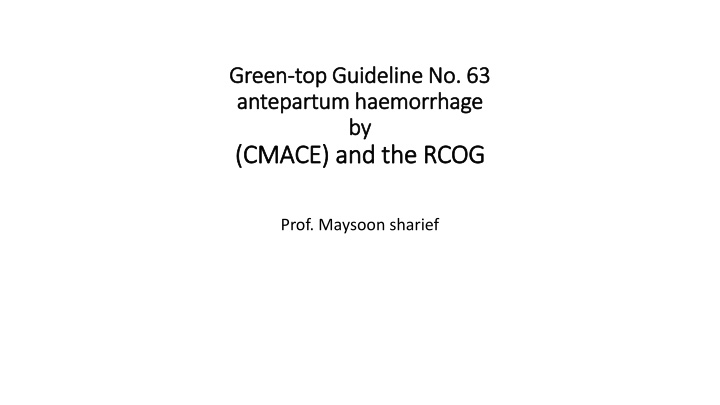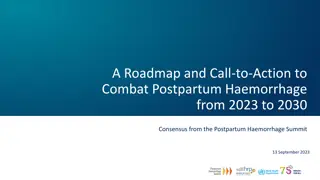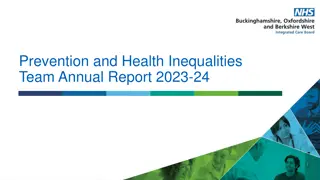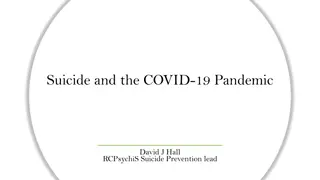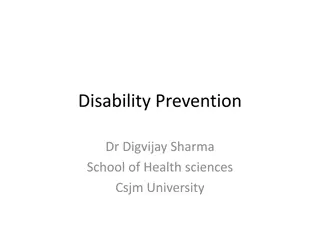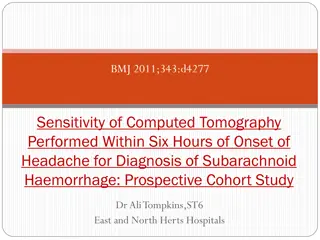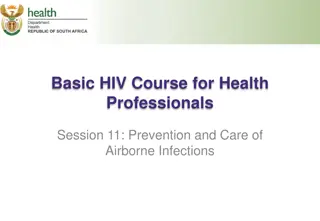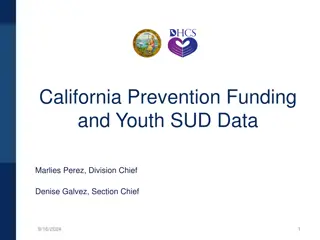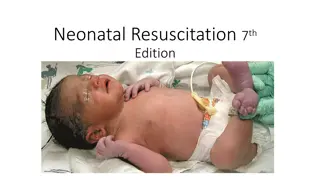Antepartum Haemorrhage: Causes, Definitions, and Prevention
Antepartum haemorrhage is a significant concern in maternal healthcare, contributing to maternal deaths globally. This article delves into the causes, definitions, risk factors for placental abruption, and strategies for prediction and prevention.
Download Presentation

Please find below an Image/Link to download the presentation.
The content on the website is provided AS IS for your information and personal use only. It may not be sold, licensed, or shared on other websites without obtaining consent from the author.If you encounter any issues during the download, it is possible that the publisher has removed the file from their server.
You are allowed to download the files provided on this website for personal or commercial use, subject to the condition that they are used lawfully. All files are the property of their respective owners.
The content on the website is provided AS IS for your information and personal use only. It may not be sold, licensed, or shared on other websites without obtaining consent from the author.
E N D
Presentation Transcript
Green Green- -top Guideline No. top Guideline No. 63 antepartum antepartum haemorrhage haemorrhage by by (CMACE (CMACE) ) and the and the RCOG 63 RCOG Prof. Maysoon sharief
B Background ackground Obstetric haemorrhage remains one of the major causes of maternal death in developing countries Is the cause of up to 50% of the estimated 500 000 maternal deaths that occur globally each year. In the UK ( 2006-08) report of the UK Confidential Enquiries into Maternal Deaths haemorrhage was the sixth highest direct cause of maternal death In South Africa, obstetric haemorrhage was the third most common cause of death 12.4% of all deaths; Haemorrhage emerges as the major cause of severe maternal morbidity in in both developed and developing countries.
INTRODUCTION INTRODUCTION Causes of APH include:1- placenta praevia, 3- local causes (for example bleeding from the vulva, vagina or cervix). It is not uncommon to fail to identify a cause for APH when it is then described as unexplained APH . 2- placental abruption
definitions have been used: 1- Spotting - staining, streaking or blood spotting noted on underwear or sanitary protection Minor haemorrhage 2- blood loss less than 50 ml that has settled Major haemorrhage 3-Blood loss of 50-1000 ml, with no signs of clinical shock Massive haemorrhage 4- Blood loss greater than 1000 ml and/or signs of clinical shock.
Prediction and prevention of antepartum Prediction and prevention of antepartum haemorrhage haemorrhage? ? What are the risk factors for placental abruption? Hx of abruption in a previous pregnancy. 4.4% : pre-eclampsia, fetal growth restriction , non-vertex presentations, polyhydramnios , advanced maternal age, multiparity, low body mass index (BMI) ,
Prediction and prevention of antepartum Prediction and prevention of antepartum haemorrhage haemorrhage? ? , pregnancy following assisted reproductive techniques , intrauterine infection , premature rupture of membranes, abdominal trauma (both accidental and resulting from domestic violence), smoking and drug misuse (cocaine and amphetamines) during pregnancy. intrauterine haematoma is identified on ultrasound scan in the first trimester, the risk of subsequent placental abruption is increased thrombophilias were associated with an increased risk of placental abruption(the relationship between factor V Leiden, the prothrombin gene mutation and placental abruption)
What are the risk factors for placenta praevia? Previous placenta praevia Previous caesarean sections background rate of o.5% One previous caesarean section OR 2.2 (95% CI 1.4-3.4 with a background rate of 1%)47Two previous caesarean sections 4.1 (Three previous caesarean sections 22.4 Previous termination of pregnancy Multiparity Advanced maternal age (>40 years) Multiple pregnancy Smoking Deficient endometrium due to presence or history of: uterine scar endometritis manual removal of placenta curettage submucous fibroid Assisted conception
Can APH be prevented? Can APH be prevented? There is limited evidence to support interventions to prevent APH. But advice and modified certain risk factors ( smoking vitamin supplementation and risk of placental abruption found that women who use folic acid and multivitamins during pregnancy are significantly less likely than non-users to develop placental abruption no conclusive evidence of benefit There are no good data to support a role for antithrombotic therapy (low dose aspirin +/- low molecular weight heparin) in the prevention of abruption in women with thrombophilia.
Complications of blood transfusion Table 2. Complications of APH Placental abruption Fetal complications Maternal complications Fetal hypox ia Small for gestational age and fetal growth restriction Prematurity (iatrogenic and spontaneous) Anaemia Infection Maternal shock Renal tubular necrosis Fetal death Consumptive coagulopathy Postpartum haemorrhage Prolonged hospital stay Psychological sequelae
Health professionals should be aware that domestic violence in pregnancy may result in APH.50Women with repeated presentations that may include APH should be asked about this. Where should the woman presenting with APH be managed? 1- should advise to report vaginal bleeding to their antenatal provider 2- Stabilised if necessary and transferred to a hospital maternity unit with facilities for resuscitation (such as anaesthetic support and blood transfusion resources) and performing emergency operative delivery. 3-multidisciplinary team including midwifery and obstetric staff, with immediate access to laboratory, theatre, neonatal and anaesthetic services, haemorrhage should be managed in centres with facilities for blood transfusion, intensive care and other interventions
What is the role of clinical assessment in women presenting with APH? What is the role of clinical assessment in women presenting with APH? indicates that there is no place for the use of prophylactic Evidence tocolytics in women with placenta praevia to prevent bleeding The role of clinical assessment in APH first whether urgent intervention is required to manage maternal or fetal compromise. The process of triage includes history taking to assess coexisting symptoms such as pain, an assessment of the extent of vaginal bleeding, the cardiovascular condition of the mother, and an assessment of fetal wellbeing.
In massive haemorrhage that is persisting or if the woman is unable to provide a history due to a compromised clinical state, an acute appraisal of maternal wellbeing should be performed and resuscitation started immediately. The mother is the priority in these situations and should be stabilised prior to establishing the fetal condition.
there is no maternal compromise a full history should be taken. If there is pain associated with the haemorrhage. Risk factors for abruption and placenta praevia should be identified. The woman should be asked about her awareness of fetal movements and attempts should be made to auscultate the fetal heart. If the APH is associated with spontaneous or iatrogenic rupture of the fetal membranes, bleeding from a ruptured vasa praevia should be considered. Previous cervical smear history may be useful in order to assess the possibility of a neoplastic lesion of the cervix as the cause of bleeding. The presentation of cervical cancer in pregnancy depends on the stage at diagnosis and lesion size; most women with International Federation of Gynecology and Obstetrics (FIGO) stage I cancer are asymptomatic; symptomatic pregnant women usually present with APH (mostly postcoital) or vaginal discharge.
Examination of the woman should be performed to assess the amount and cause of Examination of the woman should be performed to assess the amount and cause of APH. APH. Abdominal palpation speculum examination If the woman presents with a clinically suspicious cervix she should be referred for colposcopic evaluation in line with guidelines from the British Society for Colposcopy and Cervical Pathology Digital vaginal examination digital vaginal examination should not be performed until an ultrasound has excluded placenta praevia. Digital vaginal examination can provide information on cervical dilatation if APH is associated with pain or uterine activity
What investigations should be performed in women presenting What investigations should be performed in women presenting with APH? with APH? The maternal investigations performed will depend on the amount of bleeding. 1--Blood tests -full blood count and.the platelet count, if low, coagulation screen - 4 units of blood cross-matched. Urea, electrolytes and liver function tests should be assayed -Kleihauer test should be performed in rhesus D (RhD)-negative women to quantify fetomaternal haemorrhage (FMH) in order to gauge the dose of anti-D immunoglobulin (anti-D Ig) required Kleihauer test is not a sensitive test for diagnosing placental abruption 2-Placental abruption is a clinical diagnosis and there are no sensitive or reliable diagnostic tests available. Ultrasound has limited sensitivity in the identification of retroplacental haemorrhage
Fetal investigation : -cardiotocograph (CTG)
